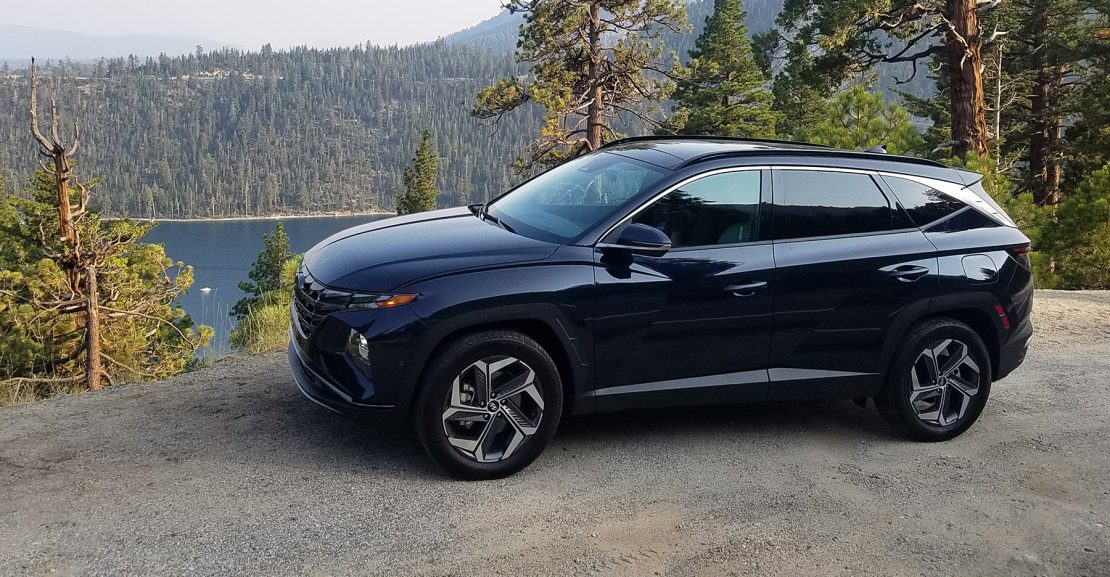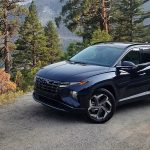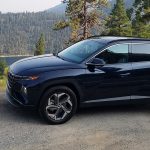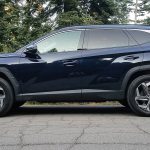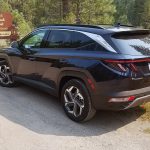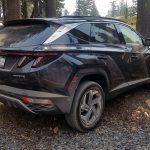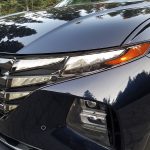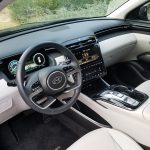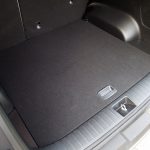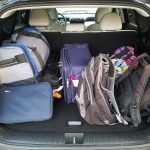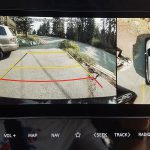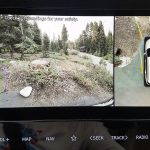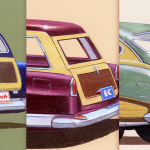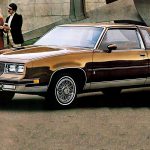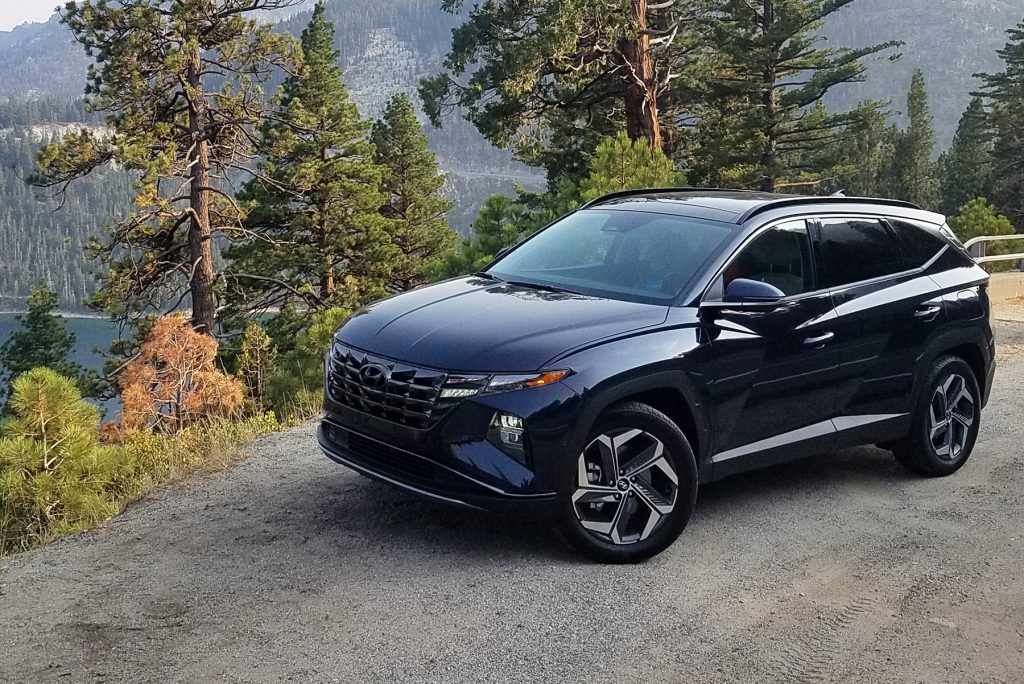
 2022 Hyundai Tucson Limited Hybrid
2022 Hyundai Tucson Limited Hybrid
Class: Compact Crossover SUV
Miles driven: 551
Fuel used: 16.5 gallons
| CG Report Card | |
|---|---|
| Room and Comfort | A- |
| Power and Performance | B |
| Fit and Finish | B |
| Fuel Economy | A |
| Value | B+ |
| Report-card grades are derived from a consensus of test-driver evaluations. All grades are versus other vehicles in the same class. Value grade is for specific trim level evaluated, and may not reflect Consumer Guide's impressions of the entire model lineup. | |
| Big & Tall Comfort | |
| Big Guy | B+ |
| Tall Guy | A |
| Big & Tall comfort ratings are for front seats only. "Big" rating based on male tester weighing approximately 350 pounds, "Tall" rating based on 6'6"-tall male tester. | |
| Drivetrain | |
| Engine Specs | 226-hp 1.6-liter |
| Engine Type | Turbo 4-cyl hybrid |
| Transmission | 6-speed automatic |
| Drive Wheels | AWD |
Real-world fuel economy: 33.4 mpg
Driving mix: 20% city, 80% highway
EPA-estimated fuel economy: 37/36/37 (mpg city/highway/combined)
Fuel type: Regular gas
Base price: $37,350 (not including $1185 destination charge)
Options on test vehicle: Carpeted floor mats ($195)
Price as tested: $38,730
Quick Hits
The great: Excellent passenger and cargo space for the class, fuel-efficient hybrid powertrain; generous level of standard equipment
The good: Pleasant ride quality; feature-rich infotainment system and digital gauge display
The not so good: Occasionally non-linear acceleration; not all testers like touch-sensitive controls
More Tucson price and availability information
Damon Bell
Hyundai’s Tucson compact SUV has been redesigned for 2022, kicking off its fourth generation with radical new styling, a host of new technology features, and its first-ever hybrid and plug-in-hybrid models, all on a longer platform that offers improved passenger and cargo volume. We got our first taste of the new Tucson on its press-preview launch event, and we also tested a Hybrid Limited model in our Consumer Guide main office in suburban Chicago.
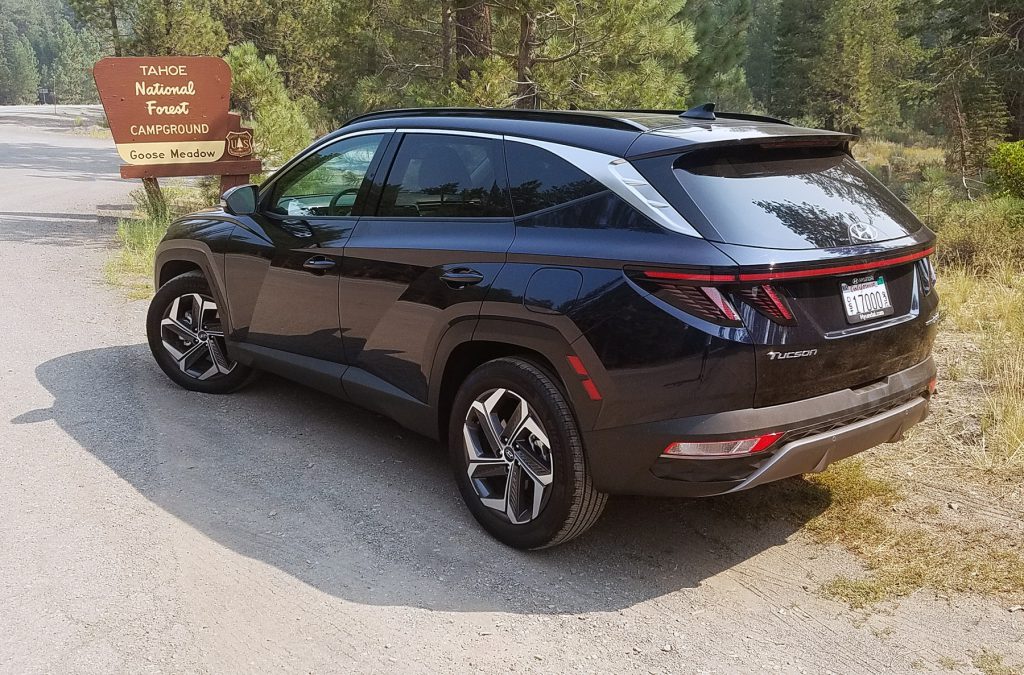
This time around, another Tucson Hybrid Limited was our mount for a late-summer family vacation in the Lake Tahoe area, a lovely alpine wilderness at the border of California and Nevada. Our test vehicle for this weeklong trip was virtually identical to the one we tested previously… the only difference was color. So, we will refer you to our original test-drive review for the main details, but also note that Northern California terrain and driving conditions are quite different from our Chicagoland home-base environs—this enabled us to further appreciate what the Tucson Hybrid has to offer.
Quick Spin: 2021 Hyundai Santa Fe Calligraphy
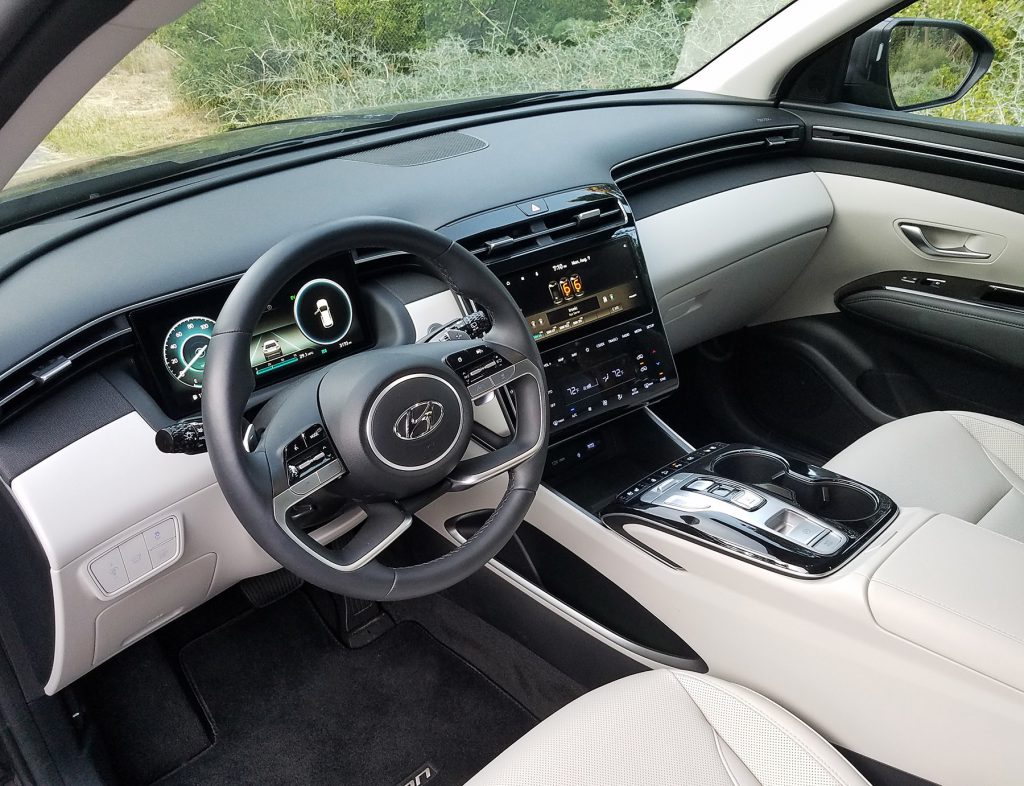
Whether hybrid or regular-gas-engine Tucson, the Limited is the topline trim level, and it comes decked out with a very generous list of standard features, several of which are not available on other models. There are no options available outside of accessory-type items such as the floor mats on our test vehicle, which bumped up its bottom-line price to $38,730. That’s a serious premium over the lesser Tucson Hybrid trim levels—the entry-level Blue (starting price $30,385, including destination) and the SEL Convenience ($32,985)—but there are lots of amenities here to justify the bump.
Test Drive: 2022 Volkswagen Taos SE
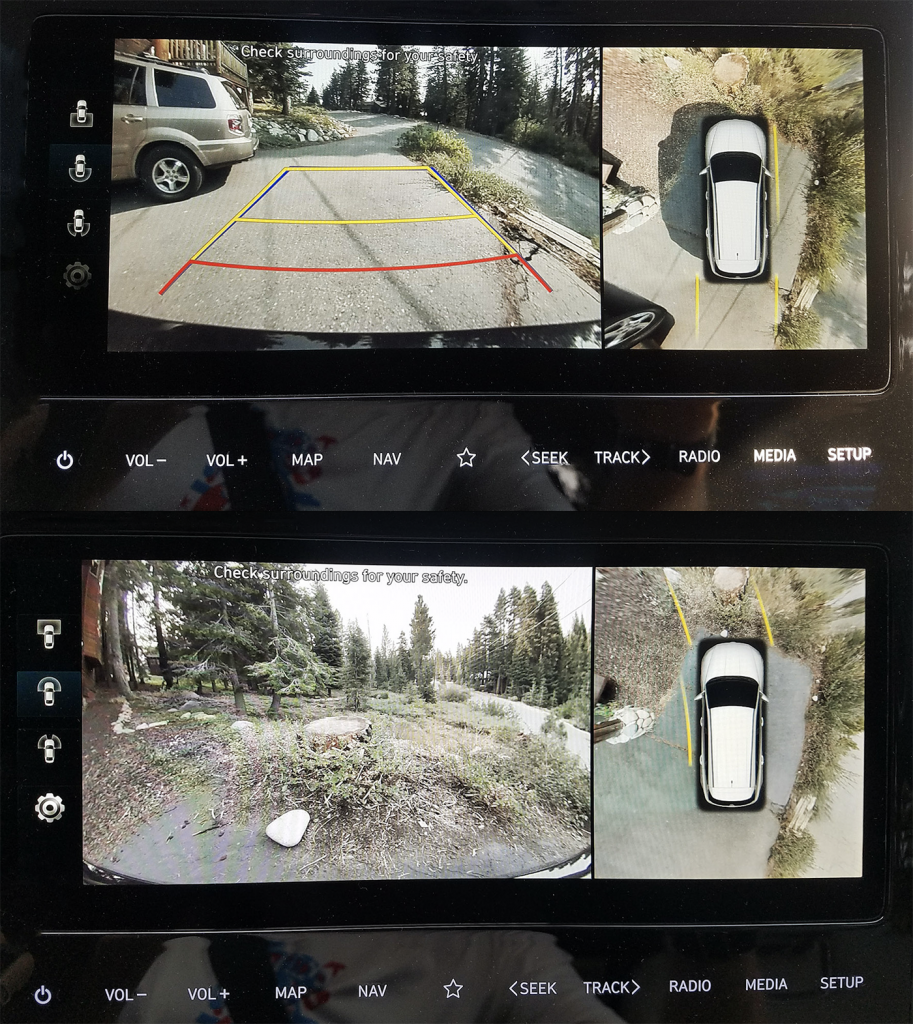
Among those upgrades is a digital gauge cluster that includes several thoughtful, helpful features and displays. One of the readouts is a graphic of the four wheels that show the amount of power being directed to the front and rear wheels in real time (It was interesting to note that the AWD system seemed to automatically direct more power to the rear wheels when I was driving on a gravel road to get to a remote cabin.) The Intelligent Speed Limit Warning and Assist feature detects the current speed limit and displays a speed-limit sign in the digital instrument cluster; the speed-limit numbers turn from black to red if you exceed the speed limit.
Test Drive: 2022 Subaru Outback Wilderness
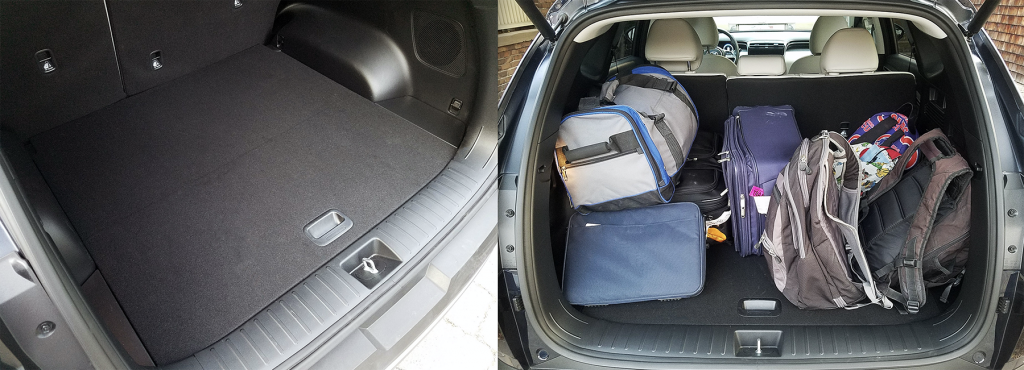
Hyundai’s blind-spot camera system, which displays an image of the vehicles left- or right-side blind spot in the instrument panel when the appropriate turn signal is activated, was helpful on unfamiliar roads. And, the 360-degree surround-view monitor proved invaluable when navigating the super steep, narrow driveway of the mountain cabin we rented for the trip. The Tucson’s turning radius isn’t particularly tight, however… we found ourselves having to back up and reposition to maneuver into some tight parking spots.
First Spin: 2022 Toyota Corolla Cross
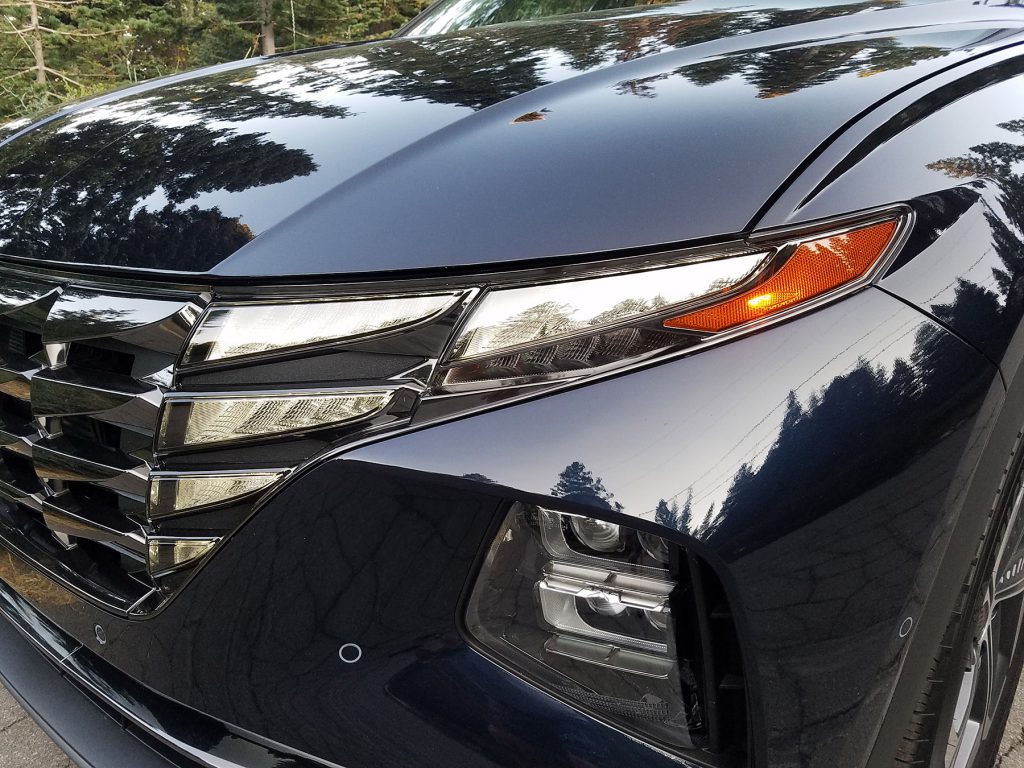
We had no major complaints about the Tucson’s control layout. At Consumer Guide, we’re typically not big fans of touch-sensitive “virtual” buttons over traditional physical controls—they often demand more attention when driving (“Did my touch register or not?”)—but the Tucson’s are some of the best, most-responsive touch-sensitive controls we’ve used.
The Tucson’s improved passenger and cargo room were much appreciated on our California trip. There were no complaints about passenger space among my family of four; my wife and 9-year-old and 7-year-old sons had plenty of room, and I was comfortable as well. I’m 6’6”, and I had sufficient all-around space in the driver’s seat and even fit OK in the back seats with the front seats set all the way rearward.
The rear cargo area capably swallowed my family’s luggage—two carry-on-sized hard suitcases, a large duffel bag, and four backpacks—with a bit of room to spare. During a trip to a beach, we also managed to fit in an inflatable paddle board, four folding lawn chairs, beach towels, a volleyball, and backpacks in the cargo area with no problem. Though we didn’t need to fold the rear seats on this trip, I appreciated the rear-seatback release latches in the rear-cargo area (so you can drop the seatbacks without leaving the rear of the vehicle), and the fact that the rear seatbacks fold flat without needing to remove their headrests when the front seats are adjusted all the way back—something not all small SUVs can claim.
I’m not crazy about Hyundai’s “Auto-Open” hands-free power liftgate, however. Instead of the foot-swipe arrangement that most hands-free power liftgates use, the Hyundai hands-free setup is that the liftgate begins beeping, and then opens automatically whenever you are standing at the rear of the locked vehicle for 3 seconds or so with the key fob on your person. On more than one occasion, the system activated when I didn’t want it to—I find it more of an inconvenience to have to move away from the locked rear vehicle than to swipe my foot under the rear bumper.
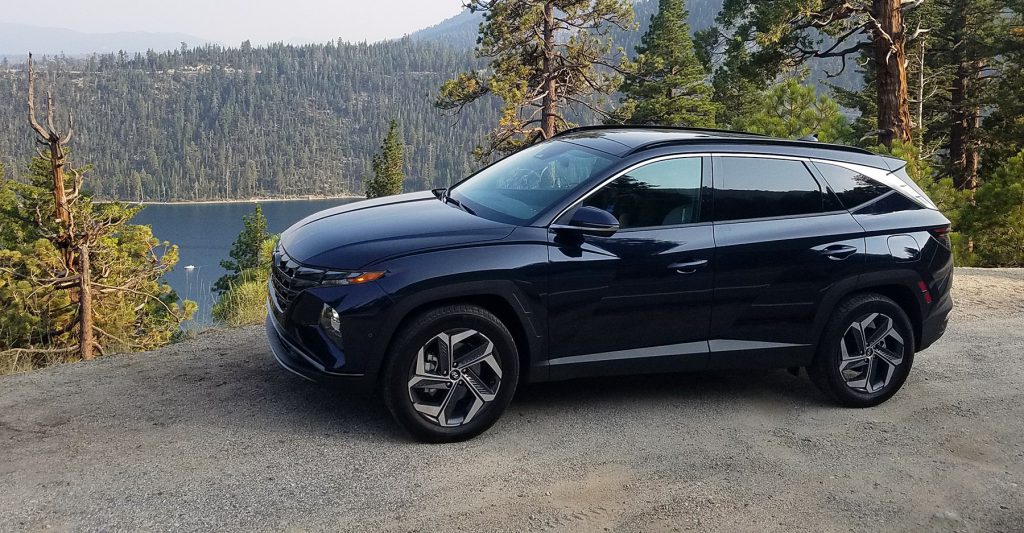
Quick Spin: 2021 Ford Bronco Sport Badlands
Despite its increased interior space, the new Tucson’s exterior dimensions stay sensible. We traversed a lot of narrow, unpaved roads and tight parking spots during our trip that would have been more tedious and stressful in a larger SUV. We didn’t do any serious off-roading, but we did drive on some rough and rutted gravel roads that the Tucson handled with ease.
The Tucson’s hybrid powertrain is a turbocharged 1.6-liter 4-cylinder paired with an electric motor for a total output of 226 horsepower. The engine is coupled to a 6-speed automatic transmission, and all-wheel drive is standard. Like other Hyundai and Kia hybrids we’ve tested, the Tucson Hybrid powertrain isn’t quite as smooth and seamless as the latest Toyota hybrids, but it’s close. It’s also notably peppier than the Tucson’s regular gasoline engine—a naturally aspirated 2.5-liter four that puts out 187 hp.
Our test vehicle handled the steep grades of the Lake Tahoe area reasonably well. The little four-cylinder occasionally had to work fairly hard—it spent a lot of time in the 3000-3500-rpm range as we climbed the long uphill grades of Highway 50 on the way to our cabin from our starting point in the California Bay Area—but we always had enough passing power in reserve when we needed it. The engine note isn’t particularly refined, but it is quite well muffled, even when accelerating or driving uphill. However, we also noticed a subtle but persistent wind whistle from the driver’s side front-door window of our test vehicle when traveling at highway speeds.
The hybrid powertrain was a nice benefit when coasting downhill on mountain highways. Those sharp grades offered a lot of opportunity for regenerative charging of the hybrid system’s battery, and the charging process also served as a bit of “engine braking” that keep the vehicle’s speed in check. Our average fuel economy for this trip worked out to 33.4 mpg. That’s notably shy of the 37 mpg city/36 highway/37 combined EPA rating, and 36.0 mpg we averaged in in our Chicago-area Tucson Hybrid test vehicle. We’ll chalk that difference up to the Lake Tahoe area’s terrain. We averaged just 29.1 mpg on our uphill drive to the cabin; for the downhill trip back to the Bay Area, our fuel economy was 40.1, topping the EPA estimates.
However you slice it, the Tucson Hybrid delivers excellent fuel economy, comfortable accommodations, and helpful technology features, in a wide variety of driving situations.
Quick Spin: 2021 Chevrolet Trailblazer Activ
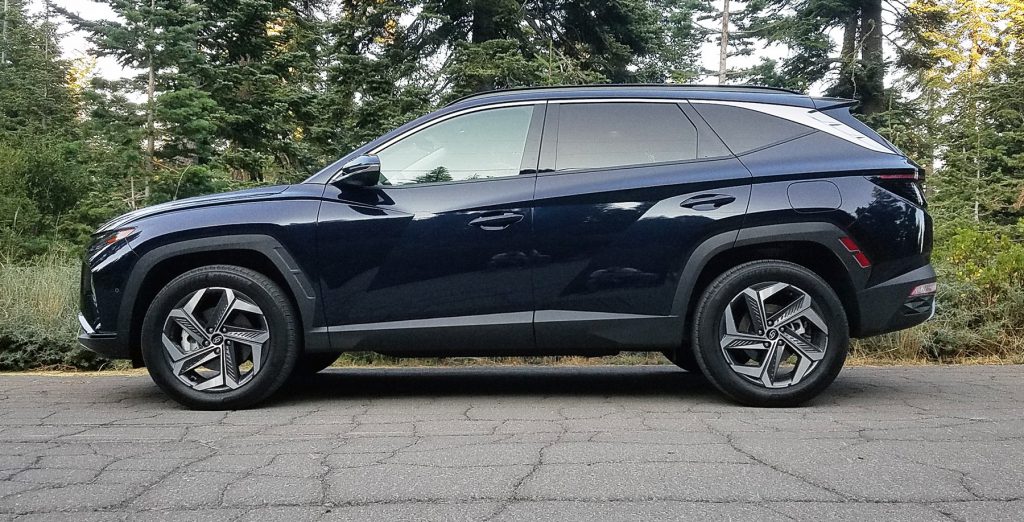
Check out the Consumer Guide Car Stuff Podcast
2022 Hyundai Tucson Limited Hybrid Gallery
(Click below for enlarged images)
Hyundai Tucson Limited Hybrid
Hyundai Tucson Limited Hybrid

